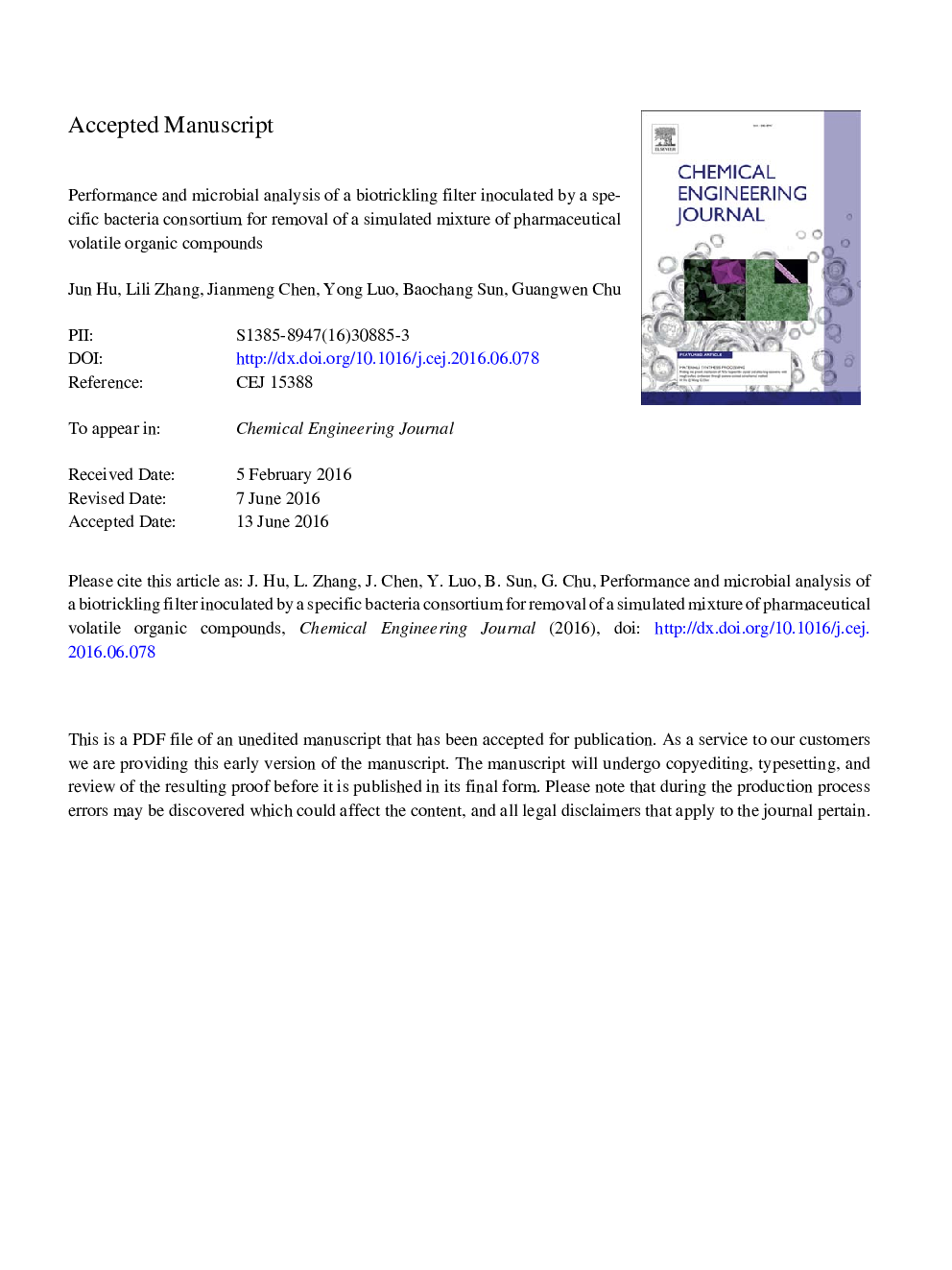| Article ID | Journal | Published Year | Pages | File Type |
|---|---|---|---|---|
| 6581350 | Chemical Engineering Journal | 2016 | 35 Pages |
Abstract
Biotrickling filters (BTFs) could not achieve satisfactory performance for some recalcitrant volatile organic compounds (VOCs) because of slow microbial adaptation and growth. The treatment of a model mixture of pharmaceutical VOCs containing toluene, o-xylene and dichloromethane in a specific BTF was investigated. The BTF was inoculated with specified strains of Zoogloea resiniphila HJ1 and Methylobacterium rhodesianum H13 to improve the removal of recalcitrant VOCs. The BTF showed a fast start-up with over 96.5% removal for each pollutant from day 17 onwards. During the operation, the BTF maintained removal efficiency of 96-100% for a net influent concentration (Cinlet) of 450-600 mg mâ3 at an empty bed retention time (EBRT) of 30-75 s. The maximum elimination capacity (EC) of 114.3 g mâ3 hâ1 was achieved at an inlet loading rate (LR) of 135 mg mâ3 hâ1. A high carbon mineralization of 80% implied a nearly complete biodegradation of the removed VOCs. Both 16S rRNA gene clone library and 454 pyrosequencing were used to verify the evolution of the added strains during the operation of the BTF. Clones 1 and 11 had a 100% similarity with Zoogloea resiniphila HJ1 and Methylobacterium rhodesianum H13, respectively, confirming the persistent existence of the inoculated specialized strains. According to the pyrosequencing results, Zoogloea and Methylobacterium had higher relative abundances than other bacterial genera in the BTF, implying their dominance during the operation. The persistence and dominance of the added strains were possibly responsible for the improved performance of the BTF. Overall, the results of this study open new possibilities for biotrickling filters of recalcitrant VOCs.
Related Topics
Physical Sciences and Engineering
Chemical Engineering
Chemical Engineering (General)
Authors
Jun Hu, Lili Zhang, Jianmeng Chen, Yong Luo, Baochang Sun, Guangwen Chu,
